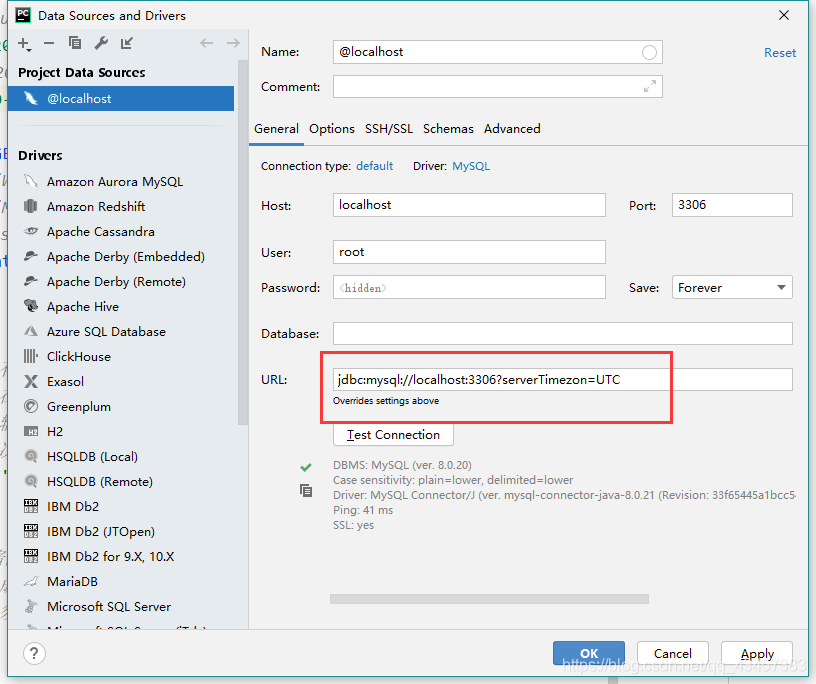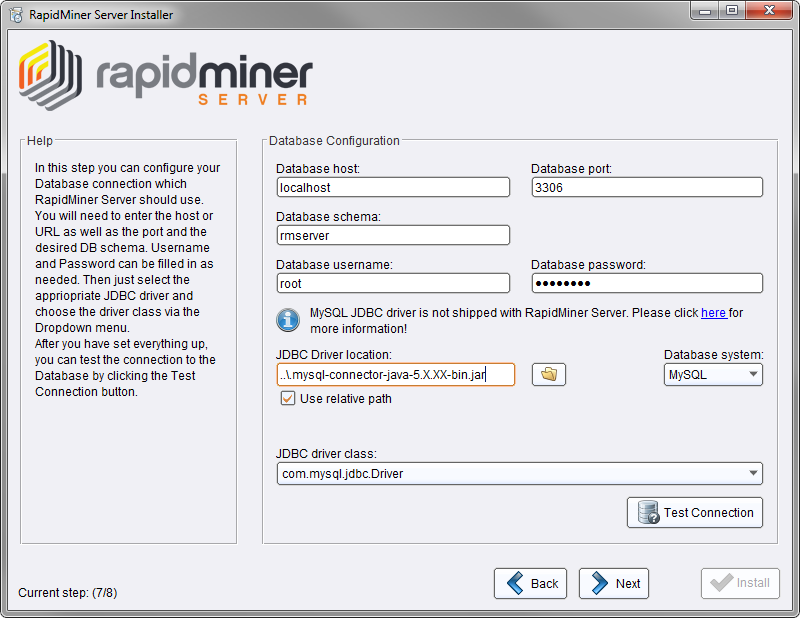

- #Wget mysql jdbc driver how to
- #Wget mysql jdbc driver install
scripts/DM_create_tables_was.sql /installĬOPY. & yum -y localinstall oracle-database-*18c* \ĬOPY. NLS_DATE_FORMAT= "dd/mm/yyyy:hh24:mi:ss" \ PATH=/home/oracle/bin:/opt/oracle/product/18c/dbhomeXE/bin:$PATH \ ORACLE_HOME=/opt/oracle/product/18c/dbhomeXE \
#Wget mysql jdbc driver install
RUN yum -y install oracle-database-preinstall-18cĬOPY. RUN yum -y install file openssl lsof sudo sysstat tree wget which & useradd -m -g oinstall -G oinstall,dba,oper -u 501 oracle \ Please suggest what you think may be the issue here?
Attached is my-sql Dockerfile and shell script which I am using to create my-sql image. Also my-sql is listening on 0.0.0.0, which I verified using netsat -lnp|grep 3306. The service app is unable to connect to my-sql. Sudo docker run -d -net=my-network -name=uma umaģ) Java app inside my service container connects to my-sql as followsĭb.url: jdbc:mysql://my-sql:3306/Database_NameĬom.4.CommunicationsException: Communications link failureĬaused by: : Connection refused Sudo docker run -d -net=my-network -name=my-sql my-sqlĢ) started my application service uma (detached mode) as follows: I tried the above things you suggested as follows:ġ.) started my-sql container (detached mode) and after creating "my-network" If not really needed, just skip itĪs mentioned earlier, doing ports: 3306:3306 publishes the mysql ports on the host, so the database is "publicly" accessible if not needed, you could skip thatįinally I think you have a typo in your mysql service mysqll: (there's two l's at the end) Giving it a fixed name, may make it more complicated to run multiple instances of the same project under different names, or, multiple projects that use a mysql container. Docker Compose automatically adds a network-alias for the service name (i.e., the container may be named myproject_mysql, but if the service is named mysql, other containers can still access it under the name of that service ( mysql). It looks like you're building an image for both, but tag the image built by the mysql service as mysql that's dangerous, because you may overwrite the "official" mysql image locally better give it a custom name.Īlso, by setting container_name, the container name is fixed, and no longer dependent on the compose project name. So, my query is, there anything missing or incorrect here? If you use a custom network, you'll get the advantage of DNS based service discovery, making it easier (and reliable) to let containers communicate with each other based on their name, instead of trying to find the IP-address the IP address of a container can change (for example, if the container is restarted), which would result in your Java app being unable to communicate.įor example, you could realize this doing I see you don't specify a -net option for the containers, so they're both connected to the default ( bridge) network. for debugging), use docker exec -it mysql bash (if the container is named mysql).Īlso by using -p 3306:3306 you're publishing the MySQL port to the hosts public interface, making it publicly accessible if you don't need that, I suggest removing the -p option. If you need a shell in the mysql container (e.g. You should not run the container interactively, but detached ( -d). See Debugging MariaDB with mysql-test-run for more information.įor End of Life releases, MariaDB Foundation will not provide security updates, however outside contributors are welcome to submit security and bug fixes and backports to no-longer maintained versions.First of all, you're starting the mysql container interactively, and overriding the default command with bash doing so will result in the actual mysql server not being initialized and started (just bash). If the bug is repeatable, it is very helpful if you create a test case for the bug for use with mysql-test-run. If you need help, ask on Zulip, or on the maria-developers mailing list. The developers are generally happy to help with verifying bugs. #Wget mysql jdbc driver how to
The Reporting Bugs page on the Knowledge Base has details on how to report a bug. The roadmap is visible on (login is required), along with estimated release dates. Each stable version receives bug-fixes and security fixes periodically. The current supported versions are: 10.2, 10.3, 10.4, 10.5, 10.6 (supported for 5 years), 10.7 (supported for one year) and the development version is 10.8.



With the new release model, there will be multiple short-term support each year, in addition to less frequent long-term support releases. Until MariaDB 10.6, MariaDB Server has had about one stable major release every year. MariaDB Foundation ensures that MariaDB Server has a steady cadence of releases. To help with automating downloads of MariaDB Server and related files, MariaDB Foundation has exposed a REST API.








 0 kommentar(er)
0 kommentar(er)
